Your behind-the-scenes look into Israeli Wine Direct and the re-emerging Israeli wine scene!
Spring is here and summer is right around the corner! With this nice weather comes a desire to enjoy some of the finer points in life. It’s time to starting opening some nice, cool, refreshing white wines and this posting is going to be all about the different varieties.
The most commonly used white grape, Chardonnay is grown all over the world and used in all kinds of wines. It is sometimes blended and is sometimes a single varietal, it is even the main grape in making sparkling wines. Originating in Burgundy, France its growth has become global over the course of the past century and is now a standard grape grown by old and new vineyards alike. The flavor of the grape is very neutral, usually a crisp apple and tropical fruit flavor, and is easily influenced by flavor additions such as terroir or barreling in oak. This means that the grape can be easily blended with bolder ones to create a subtle yet interesting new wine.
Chardonnay’s mildness is often altered by the winemaker, who will occasionally manipulate the grape through terroir, or influencing the characteristics of the grape through its surrounding terrain. Techniques such as pruning its extensive leaf canopy ensures that the grape receives the most nutrients and growing many clusters of vines forces the plants to send most of their energy to the grapes, producing greater amount of flavor.
People often describe Chardonnay as tasting “buttery” and “oaky”, neither of which are natural distinctions of the grape. In fact, the buttery flavor comes from a particular kind of fermentation called Malolactic fermentation, and is a result of the diacetyl byproduct. Its oaky flavor is the result of barreling the wine in oak barrels prior to bottling. Oak permits some amount of evaporation and oxidization to occur, however not enough to ruin the wine. Instead, it concentrates the flavor of the wine, compounding the aromas and flavors, producing notes of caramel and toffee. The smokiness of the wine comes from charring or “toasting” the inside of the barrel. Many winemakers produce their chardonnays this way, however fermenting and aging in stainless steel tanks, such as those from Chablis, is also popular and produces a livelier, more fruity and citrusy Chardonnay than its oak brethren.
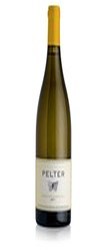 Pelter Unoaked Chardonnay
Pelter Unoaked ChardonnayA perfect example of an un-oaked wine, left to show off the wine’s rich minerality, summer fruits, kiwis, pineapple and peaches. This is a medium-bodied wine, with well-balanced acidity, showing a generous share of elegance. People who tend to cringe at the buttery flavor of Chardonnay will love this wine and people who prefer the typical oakiness will be surprised to discover the versatility of Chardonnay!
The parent of Cabernet Sauvignon, Sauvignon Blanc is the opposite of Chardonnay. While Chardonnay’s grape is mild and the wine is either buttery of fruity, Sauvignon Blanc is dry, grassy with mineral tonalities. Also known as Fumé Blanc, this wine is the Sancerre and Bordeaux response to Burgundy’s Chardonnay. Like Chardonnay, it is grown all over the world and like Chardonnay, the treatment of the wine affects its overall flavor. Leaving the skins with the wine longer during fermentation produces a sharpness to the wine while early removal keeps the wine fruity. Like Chardonnay, it might undergo Malolactic fermentation to make the wine more buttery though in New World winemaking this is usually not done as the intense flavor of the grape is generally preferred.
Sauvignon Blanc, though mineral in flavor, is still used to make some of the sweetest dessert wine. Sauternes from the Sauternais region in Bordeaux, France is a delicious, sweet dessert wine made from Sémillon, Sauvignon Blanc and Muscadelle grapes. Typically tasting of honey and peaches, the Sauvignon Blanc grape helps the wine maintain its citrus quality to offset the sweetness.
 Assaf Sauvignon Blanc
Assaf Sauvignon BlancA clear, light golden color, Assaf's Sauvignon Blanc is “soft” and round, a very mellow white wine with an elegant, full taste with a touch of delicate melon, citrus, grapefruit, and pineapple along with the slight “sting” that characterizes the Sauvignon Blanc. Its acidity balances with a lingering, intricate finish.
.jpg) Pelter Sauvignon Blanc
Pelter Sauvignon Blanc
This wine is produced from 100% Sauvignon Blanc grapes. The grapes are handpicked in the Upper Galilee at the Vineyard of the Wind, Merom Golan. It smells and tastes of honeysuckle, lime and tangerine with a long, acidic and dry finish.
 Shvo Sauvignon Blanc
Shvo Sauvignon BlancAnother 100% Sauvignon Blanc, this wine is harvested in the early mornings to maximize is sweetness. It is pressed gently and in whole clusters in a traditional Champagne style and fermented using natural, indigenous yeast in tanks and in French oak barrels. It is very aromatic of pears and melons, with surprising volume, rich texture and great natural acidity.
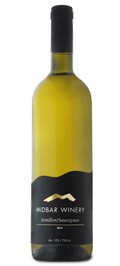 Midbar Semillion/Sauvignon Blanc
Midbar Semillion/Sauvignon BlancThis is a white wine with a light golden color, medium body and a firm acidic structure. Its aromas and flavors of lime, lemon peel, guava, exotic spices, kiwi, nectarines, and minerals complement its acidic finish. The Semillon allows the wine to cellar well and develop a special complexity.
The quieter, slightly less popular cousin of Sauvignon Blanc, Chenin Blanc is typically light-bodied and somewhat sweeter than the previously described grapes. Harvesting the Chenin Blanc grape is slightly more interactive than other grapes. For example, in the Loire valley, harvesting usually happens over the course of four to six weeks, removing small clusters of grapes from each vine in succession. This technique is known as tries. Other Chenin Blanc specialties include allowing some of the grape clusters to over-ripen and begin to shrivel and rot. This is called noble rot and will make a wine of unique flavors and sweetness.
Chenin Blanc has not traveled as far or extensively as Chardonnay and Sauvignon Blanc has. However, it has taken root in South Africa, where it is blended with Semillon and Vigonier to create a wine similar though lighter and slightly sweeter than a Chardonnay. It is also made into sparkling wine or Crémant Loire, making this grape one of the most versatile grapes out there.
 Assaf Chenin Blanc
Assaf Chenin BlancAssaf Chenin Blanc, a clear wine of a light golden color, mingles the characteristic taste of delicate tropical fruit with the aroma of jasmine. It achieves just the right balance of fresh acidity and fruit flavors. The slow fermentation process preserves this characteristic blend of taste and aroma.
 Shvo Chenin Blanc
Shvo Chenin BlancThis 100% Chenin Blanc hand harvest early in the morning and, like the Shvo Sauvignon Blanc, is pressed gently and in its whole cluster then fermented with natural, indigenous yeast in French oak barrels for 12 months then in tanks for an additional 6 months. This is a unique Chenin with a nose of sour cherry, dried fruit and minerals. It is full bodied and rich with a beautiful balance and nice acidity.
We’re back! It’s been a while since our last blog posting and we’ve missed you all! To kick off our new, revamped blog, we decided to bring you examples of our different kind of wines. Each week, we will highlight a different varietal, explaining the aromas and flavors of each grape. We will discuss the appellation, oenology and viticulture, the growing and harvesting, as well as the individual vintners. This week, we’re bringing to you our Cabernet Sauvignon wines. It is one of the most recognized and frequently used grapes and is grown all over the world from established European winemakers to New World explorers.
To start off, here’s a bit of history about the Cabernet grape. Despite its popularity, Cabernet Sauvignon is a relatively recent grape, the first production of it being in the 17th century in the southwest France, when winemakers crossbred the Cabernet Franc grape with that of the Sauvignon Blanc. The result was a hardy grape, able to withstand harsh temperatures and grow at many different elevations, has thick skin and produces a high yield with the proper vine-trimming and maintenance.
No matter where you grow the Cabernet grape, be it at high or low altitude, limestone gravel or rich terra rossa soil, the wine consistently maintains a distinct “Cabernet” quality of full-body, high tannins, and an apparent acidity. The notes of the wine may vary depending on the temperature of the region. In cooler regions, the wine will taste of blackberries, mint, and cedar, sometimes even vegetable-y. In warmer climates, the wine will become denser, more fruity or “jammy”. All of these qualities are found in our wineries, which range from the cool, mountainous regions of the north to the arid desert of the south.
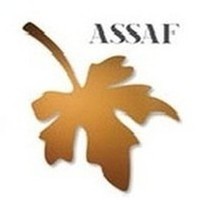 Assaf Winery
Assaf Winery
In 1990, the Kedem family planted vineyards in and around their home at Moshav Kidmat Tsvi to establish the Assaf Winery. Production of wine started in 1997. In 2011, they produced about 43,000 bottles of award-winning wines. They grow seven different types of grapes from dark Cabernets to blushing Zinfandels. Assaf Kedem, the Vintner and master Winemaker, personally tends to every vineyard. The winery is equipped with the latest state-of-the-art equipment including an on-site laboratory that provides inspection services for the Assaf Winery and other boutique wineries in the area. The barrel room contains more than 150 barrels where the wine ages, matures, and takes on its wonderful taste and fragrance
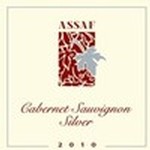 Assaf Cabernet Sauvignon Silver
Assaf Cabernet Sauvignon Silver
This wine is unfiltered or “unfined”, meaning it maintains the cloudy appearance typically filtered out to create a clear color consumers tend to prefer. Filtering is also done to remove unstable tannins, which may undesirably alter the flavor of the wine with time. However, wine such as this are becoming more popular as they are considered more “natural”. It has a deep, dark burgundy color with a lush, complex taste of black cherries, forest berries, tobacco, eucalyptus, and a hint of mint. Its slight acidity is balanced with a rich, long-lasting, pleasant aftertaste.
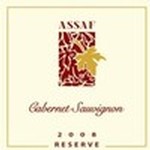 Assaf Cabernet Sauvignon Reserve
Assaf Cabernet Sauvignon Reserve
The wine is aged for 18 months in oak barrels and bottled, like the Silver, without undergoing filtration. Assaf's leading brand is a blend of two varieties of grape grown in two different vineyards. Vineyard Gimel brings the scent of eucalyptus and berries. Vineyard Bet, provides a delicate infusion of aromatic spices. The Cabernet Sauvignon Reserve mingles the characteristic hints of blackberry, cherry, and eucalyptus with subtle overtones of mint and berries.

Assaf with his wines
Kitron Winery
At the Kitron winery all stays in the family. Meir Biton and his wife and 8 children run all aspects of the business.
The winery is in transition, with a new gravitational winery being built in the Lower Galilee. A gravitational winery uses gravity-flow, a system where pumps and conveyors in transporting the grapes into the fermentation tank is replaced by constructing a multilevel facility, typically on a hill, that allow the grapes to flow naturally downward with platforms at each step for crushing, fermentation, barreling then bottling. This is a gentler and some say, purer way of winemaking.

http://blog.winecollective.ca/2013/07/12/gravity-flow-winemaking/
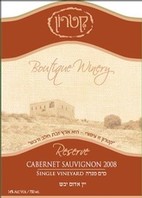 Kitron Cabernet Sauvignon
Kitron Cabernet Sauvignon
This powerful but well balanced wine is characterized by dark berries and smoked vanilla aromas. The palate is round and flattering with hints of jam and mocha.

IWD principles, Agnes, Meir, Arie with Winemaker, Meir (second from left)
 Margalit Winery
Margalit Winery
Margalit Winery is a family owned winery founded in 1989. The owners and winemakers of Margalit Winery, Yair Margalit and his son Asaf Margalit, have a special interest in Bordeaux varieties (Cabernet-Sauvignon, Merlot and Cabernet-Franc) and therefore the winery focuses on producing those red wines.
After many years of experimentation in quality wine making using various varieties, and distributing the wines amongst friends, Margalit Winery was launched in 1991 with its first Cabernet Sauvignon (1989 vintage). The public interest in the new winery grew quickly in the next few years, probably because of two reasons: it was the first boutique winery in Israel and secondly, because of the wine’s quality and uniqueness. Initially, the winery was established in a small village near the town of Rehovot. In 1994 the winery moved to its current location not far from the Mediterranean shore, midway between Tel Aviv and Haifa. The production grew gradually from 80 cases in 1989 vintage, to the current annual production of about 1,600 cases. A portion of the wine produced, is sold at the winery directly to private customers in three weekends during March/April each year. The customers are invited to taste and buy the new release. The rest of the wine is distributed to fine restaurants and wine shops in Israel and abroad.
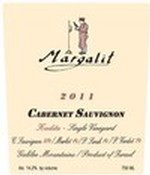 Margalit Cabernet Sauvignon
Margalit Cabernet Sauvignon
This wine has a deep garnet toward inky black remarkably concentrated and intense, still firmly tannic but with fine balance and structure yet still offers a generous mouthful of currant, cherry, blackberry and plums. It is big, broad and intense but is yielding on the palate to show grace and elegance and closes with a hint of espresso coffee for a super long finish. Named by Israeli food & wine critic Daniel Rogov as one of the best Israeli wines he tasted!
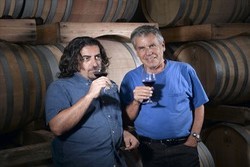
Yair and Assaf sampling their wines
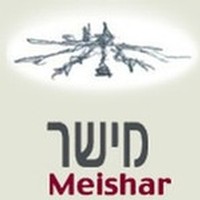 Meishar Winery
Meishar Winery
Located near Gedera, at 58 meters above the Mediterranean Sea, which is just 30 miles away, on an unassuming plot of sand and gravel are vineyards that aim to challenge those grown in France, Spain and Napa. “And how come the wine is so good?” Zeev Smilansky, the winemaker says, “We don’t really know. Perhaps because of the special rootstock – ‘Saltcreek’, particularly suitable for sandy soils, being resistant to nematodes. Or perhaps because of the small gravely hill nearby. Or perhaps because the vineyard is hardly being watered – in spite of the evil summers in this region – since its roots go down five, perhaps even ten meters deep. Or perhaps because of the way we work it – or perhaps because of love – or maybe just luck. This way or another, this little vineyard – ¾ of an acre Cabernet Sauvignon, ¾ Merlot, and ¾ Shiraz – produces prime fruit, creating wines that we can be proud of, year after year, in spite of the theories. We do all the work ourselves, planting, trellising, training, pruning, and irrigation, weeding, harvesting, crushing, fermenting, aging, bottling, and even the design of the bottles and labels – all done by our family members.”
 Meishar Vinyard 730
Meishar Vinyard 730
The flagship of Meishar Winery, not made each year. 100% Cabernet Sauvignon, medium to dark garnet in the glass, aromas of toasted spices, characteristic licorice and cedar aromas. In the mouth exceptional spices, red berries, pepper, and wet forest floor. Exceptionally powerful and balanced. Ready to drink now but will definitely mature well until 2020 at least.
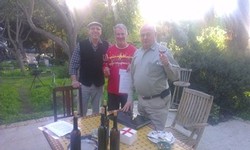
Our principals, Arie and Mayer with Winemaker Zeev
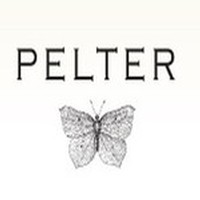 Pelter Winery
Pelter Winery
Pelter Winery, situated in the Golan Heights of northern Israel, was established by Tal Pelter in 2005. In 2001, Tal returned from oenology studies in Western Australia where he was influenced by the local approach to winemaking and the Australian character of the wines. Wine is part of the fabric of everyday life in Australia - an affordable and accessible source of enjoyment. Tal wanted to introduce this approach to the Israeli market as well as to create high quality, premium wines. The Golan Region is characterized by: cold dry climate, day/night temperature differentials, basalt soil, high altitude, and high levels of sun radiation. Together these factors create slow, long ripening, a variety of taste depths and high quality grapes. These advantages were enhanced by the open spaces so rare in Israel, and the Golan Heights was selected as the ideal location for both the business and the family. All stages of production are handled by members of the family – from selection of grapes, barrels and blends, to bottling, marketing and distribution. These collaborative efforts produced some 80,000 bottles in 2008, while preserving the winery’s rustic, intimate character.
 Pelter T-Series Cabernet Sauvignon
Pelter T-Series Cabernet Sauvignon
The grapes were harvested from the Vineyard of the Wind, Merom Golan. The wine matured for 20 months in French Oak barrels. Characterized by tastes of wild blackberries and a touch of chocolate and mint. A long and rich finish.
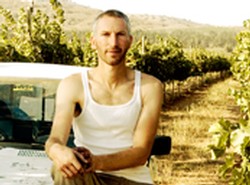
Tal Pelter
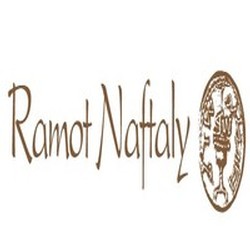 Ramot Naftaly Winery
Ramot Naftaly Winery
The winery was established in 2003, is located in the Upper Galilee in Moshav Ramot Naftaly from which it derives its name and produces about 10,000 bottles per year and plan to grow. The wines are kosher since the 2009 vintage.
Yitzhak Cohen is a very proud winemaker who started as a farmer and administrator of agriculture cooperatives of the region to winemaking by experimenting and learning winemaking in Israel. His excellent skills and high quality wine is an evidence to the high level winemaking knowhow advanced in Israel today. Yitzhak’s dream is to see the Kedesh Valley turn into the most important Appellation of the Israeli wine industry.
The winery’s vineyards are situated in Kedesh Valley, between Moshav Ramot Naftaly and Moshav Dishon. The vineyards are located at the southern edge of Kedesh Valley, an area surrounded by a high mountainous range that serves as protection from the wind. The rows of vines are planted in deep Terra Rosa soil on moderate slopes, and enjoy the natural drainage, the morning mist and the soft sunrays even in the hottest months of summer.
Boutique winery owners, some of whom also complete the role of vigneron, constantly look for distinctive conditions that will differentiate them from other wineries and growing areas. Everyone grows and produces the traditional leading wine varieties, yet the uniqueness and distinctiveness in wineries is in the development of the grapes, which varies depending on the area of growth. The Ramot Naftaly winery’s production vision is to develop, grow and manufacture wines from different varieties that are suited to the Galilee. They grow six grape varieties: Cabernet Sauvignon, Merlot, Shiraz, Petit Verdot, Malbec and Barbera.
.jpg) Ramot Naftaly Cabernet Sauvignon
Ramot Naftaly Cabernet Sauvignon
The unique location of the vineyard is highly beneficial in the wine-making process. The rich and fertile soil and special climate conditions of the Kedesh Valley give the grapes their color, flavor that transfer their characteristics to this rich flavor and bouquet wine.
 Ramot Naftaly Cabernet Sauvignon Special Edition
Ramot Naftaly Cabernet Sauvignon Special Edition
Aged in French oak barrels for 12 months. The wine is a clear-pale Bordeaux with a full aroma of red and purple fruit as well as some greenery. This wine is full-bodied and rounded, with soft tanins complete with ripe, juicy black fruit with a layer of sweet spices on the finish.